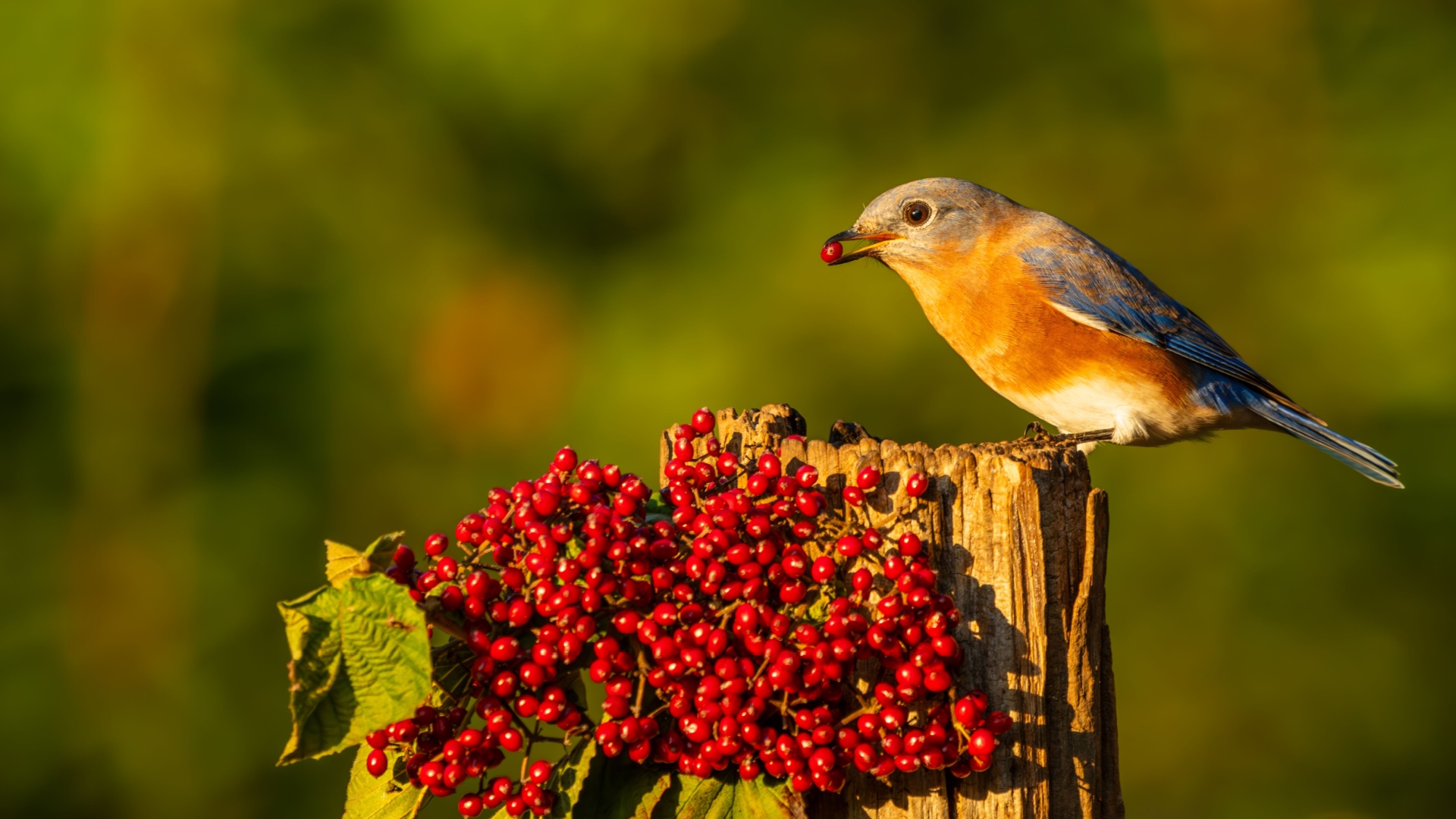Transforming your yard into a sanctuary for bluebirds requires choosing the right plants. These beautiful birds are attracted to specific plants that provide not only food but also shelter.
Discover how you can make your garden a paradise for these charming creatures with our top plant selections.
1. Serviceberry (Amelanchier)
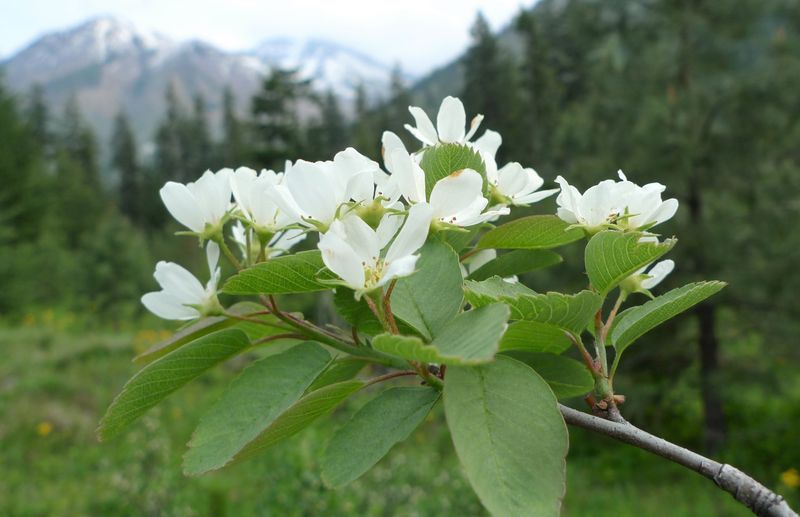
Bluebirds find the serviceberry tree irresistible, thanks to its delicious berries. This plant doesn’t just offer a food source; it becomes a center of activity for various wildlife. With its delicate white blossoms in spring, it adds a touch of elegance to any garden.
The berries mature into a deep purple, providing a feast for bluebirds, while the foliage turns a vibrant orange-red in fall. This transformation not only enhances the visual appeal of your garden but also sustains wildlife through different seasons.
Beyond its beauty, planting serviceberry can support local ecosystems by attracting beneficial insects. This combination of food, shelter, and aesthetic appeal makes serviceberry a top choice for bird enthusiasts looking to invite bluebirds into their yards.
2. Elderberry (Sambucus canadensis)
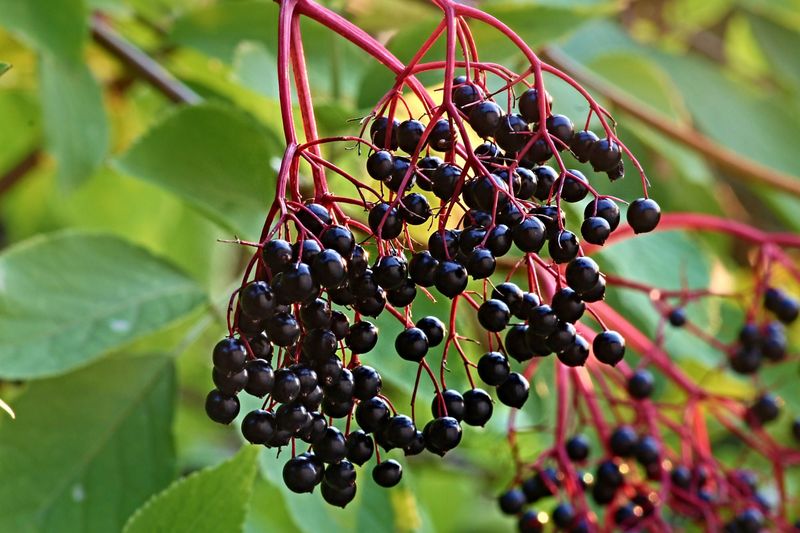
Elderberries are a favorite among bluebirds, providing abundant nutrition. These shrubs are easy to grow and maintain, making them ideal for gardeners of all levels. In spring, they’re adorned with clusters of tiny white flowers, which later transform into rich, dark purple berries.
This natural cycle creates a dynamic landscape, attracting not only bluebirds but also other wildlife. Elderberries thrive in moist soils, so consider planting near a water source if possible. Their robust growth makes them perfect for filling empty spaces in a garden.
Besides attracting birds, elderberries are known for their health benefits, often used in homemade syrups and remedies. By planting elderberry, you invite beauty to your garden and support the local bird population, making it an excellent addition to any bird-friendly space.
3. Holly (Ilex)
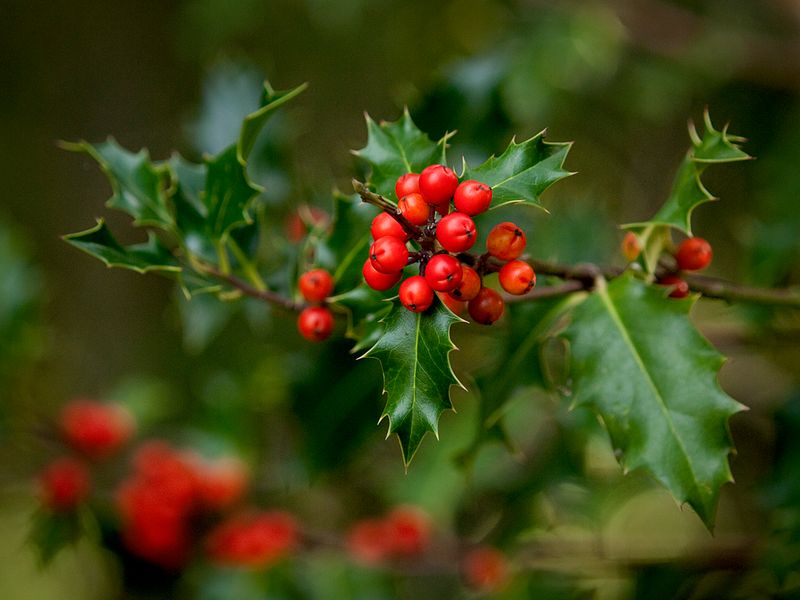
Holly bushes, with their glossy leaves and bright red berries, can transform any garden into a winter wonderland. These evergreen plants are crucial for feeding bluebirds during colder months when food is scarce.
The berries, high in energy, are a reliable food source for many bird species. Holly’s dense foliage also provides excellent shelter and nesting sites, making it a multifunctional addition to any garden. While holly bushes are often associated with winter, their beauty and utility extend throughout the year.
They can be trimmed into formal hedges or left to grow naturally, depending on your garden’s style. Adding holly is not just about attracting bluebirds; it’s about creating an inviting habitat that supports wildlife diversity all year round.
4. American Beautyberry (Callicarpa americana)
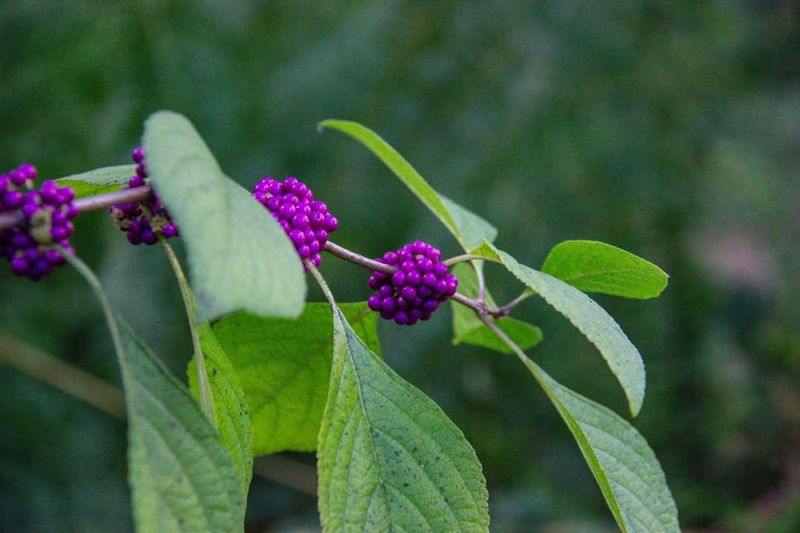
The American beautyberry is a striking shrub known for its vibrant purple berries. These berries, appearing in dense clusters, provide a visual spectacle that attracts bluebirds and other birds. In addition to its aesthetic appeal, the beautyberry’s berries are a vital food source, especially in late summer and fall.
The plant’s leaves and stems are also aromatic, adding another sensory dimension to your garden. Beautyberries thrive in a variety of soil types and conditions, making them versatile additions to your landscape.
By planting this shrub, you ensure a steady supply of food for bluebirds, while enjoying its ornamental value. This combination of beauty and utility makes the American beautyberry a must-have for bird-friendly gardens.
5. Dogwood (Cornus)
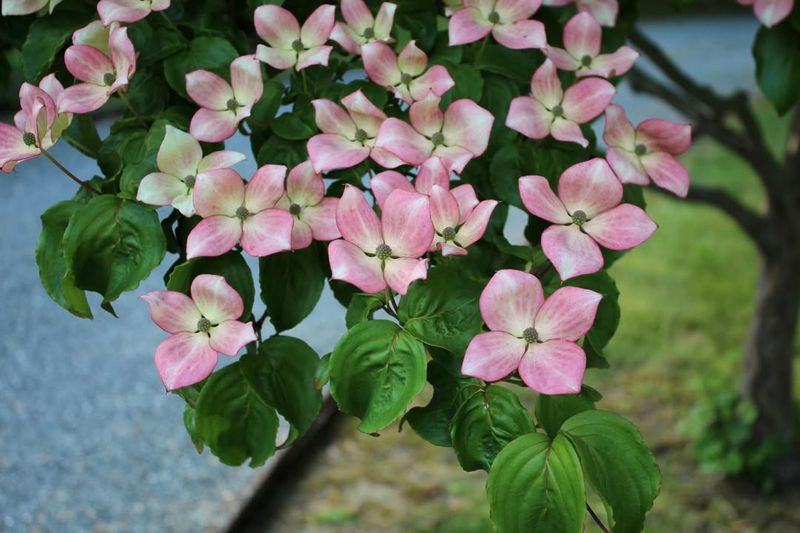
Dogwoods are admired for their beautiful flowers and ability to attract bluebirds. Their blossoms, ranging from white to pink, create a charming display in spring, signaling the arrival of warmer days. The berries develop in late summer, offering a nutritious treat for bluebirds.
Dogwoods are also known for their vibrant fall foliage, providing multi-season interest in gardens. These trees are adaptable to various soil types and conditions, making them suitable for different garden environments.
By incorporating dogwood into your landscape, you create a welcoming space for bluebirds and enhance your garden’s aesthetic appeal. Their graceful beauty and wildlife-friendly features make dogwoods a beloved choice among gardeners.
6. Sumac (Rhus)
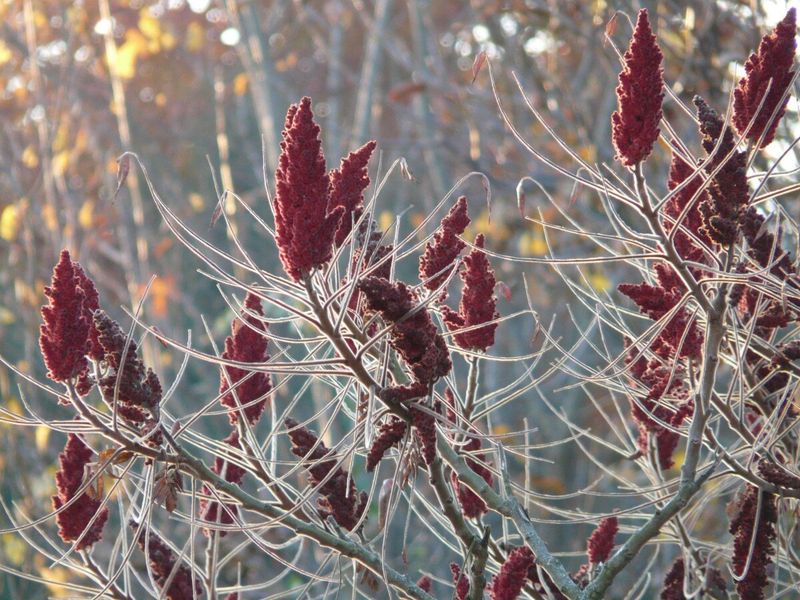
Sumacs are famous for their fiery autumn foliage, creating a spectacular display in any garden. Their clusters of red berries are highly attractive to bluebirds, offering nourishment during the fall and winter months.
These hardy plants can thrive in poor soil conditions, making them an excellent choice for challenging garden spots. Their unique growth habit adds texture and interest to landscapes. Sumacs not only provide food but also serve as valuable shelter for birds.
The combination of visual interest and ecological benefits makes sumac a worthwhile addition to bird-friendly gardens. By planting sumac, you’re supporting bluebirds and enhancing your garden’s seasonal appeal.
7. Blueberry (Vaccinium)
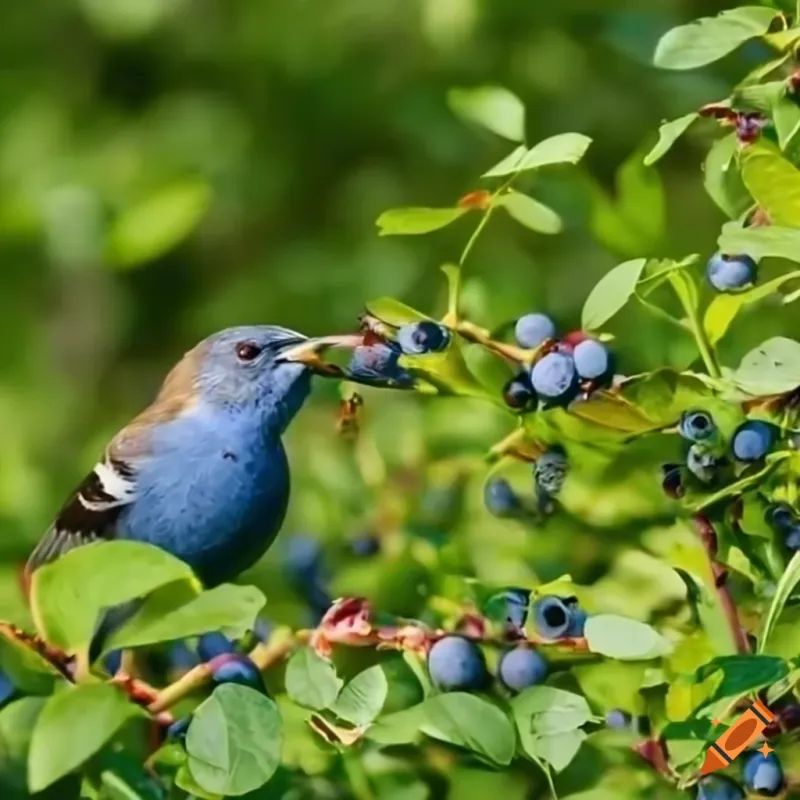
Blueberries are not just for human enjoyment; they’re also a beloved treat for bluebirds. These shrubs produce sweet, juicy berries that attract birds and other wildlife. Besides their culinary benefits, blueberry bushes are valued for their beautiful blossoms in spring and vibrant foliage in fall.
This seasonal transformation adds year-round interest to gardens. Growing blueberry bushes requires acidic soil, so testing and amending your soil may be necessary.
By providing the right conditions, you ensure a fruitful harvest for both you and the bluebirds. Including blueberries in your garden supports local bird populations while offering delicious rewards.
8. Mountain Ash (Sorbus)
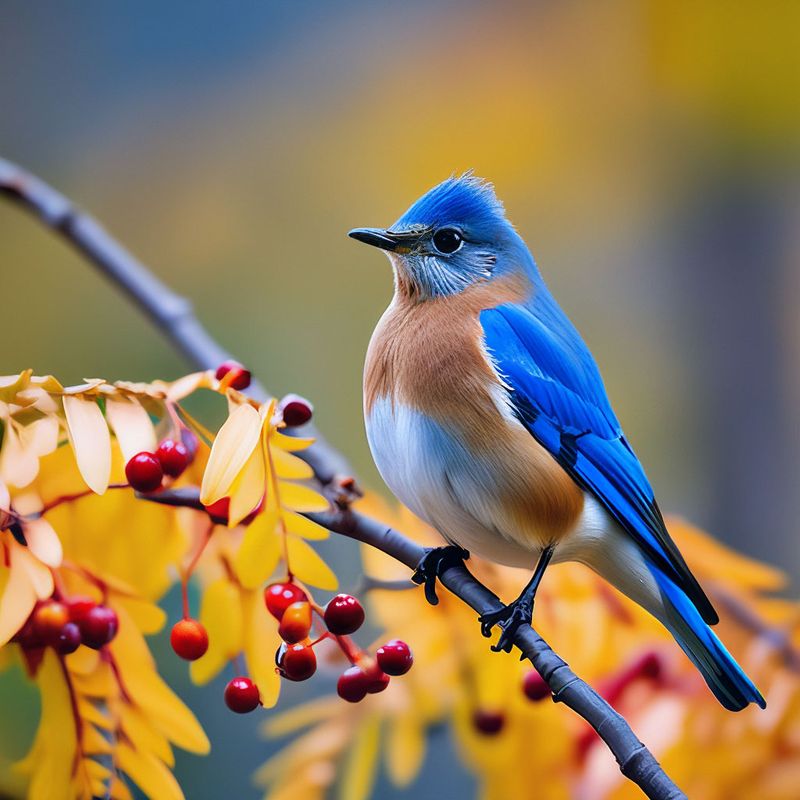
Mountain ash trees are synonymous with high-altitude beauty, often gracing landscapes with their clusters of bright orange berries. These berries are a favorite among bluebirds, providing essential nutrients during harsher seasons.
The tree’s delicate white flowers in spring add elegance, while its berries sustain birdlife into winter. Mountain ash thrives in cooler climates and can enhance your garden with both its form and function. By integrating mountain ash into your garden, you invite bluebirds to visit and enjoy the bounty.
The tree’s striking appearance and ecological benefits make it a fantastic choice for bird-friendly landscapes. The combination of aesthetics and utility ensures that mountain ash remains a popular option for attracting bluebirds.
9. Chokeberry (Aronia)
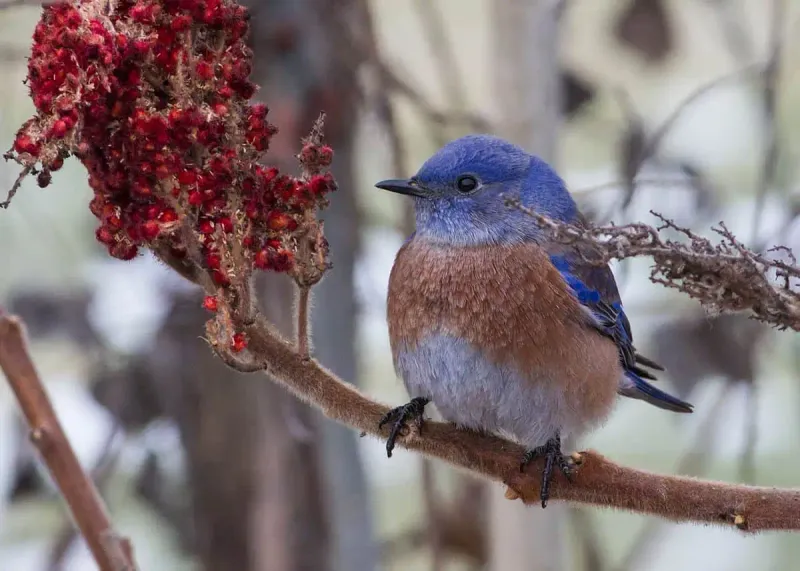
Chokeberry bushes are small yet mighty attractors of bluebirds. These shrubs produce glossy black berries that are irresistible to birds, who flock to gardens for their nutritious offerings. In spring, chokeberries display clusters of white flowers, transitioning to vibrant berries by fall.
The bush’s adaptability to wet conditions makes it suitable for water-rich areas. Planting chokeberry not only supports birdlife but also adds beauty to your garden with its decorative flowers and berries.
Its resilience in various environments makes chokeberry a versatile and rewarding addition, especially for those aiming to create a welcoming habitat for bluebirds.
10. Winterberry (Ilex verticillata)
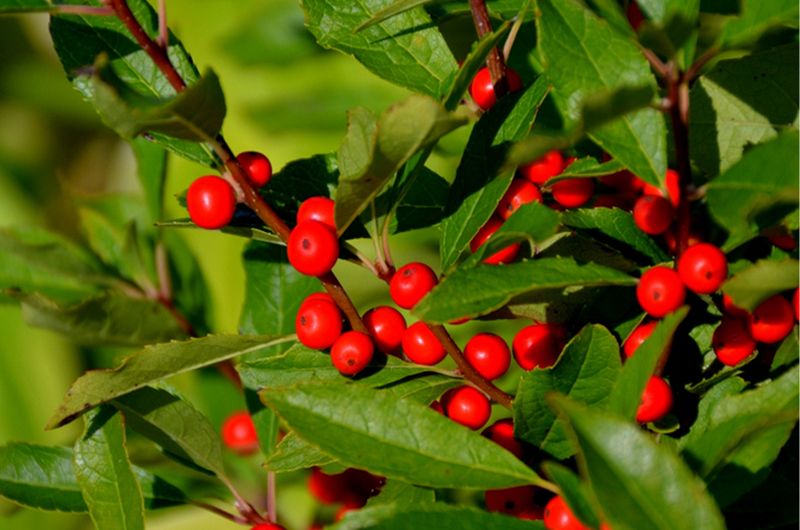
Winterberries are renowned for their stunning red berries that persist through winter, providing a vital food source for bluebirds when other options are scarce. These deciduous hollies lose their leaves in winter, accentuating the vibrancy of their berries against the stark landscape.
Winterberries thrive in moist, acidic soils and can be used to brighten up any garden during dreary months.
Including winterberry in your planting scheme ensures that bluebirds have access to nourishment throughout winter, while also adding a splash of color to the environment. Their visual impact and ecological role make winterberries a worthwhile choice for any bird-friendly garden.
11. Mulberry (Morus)
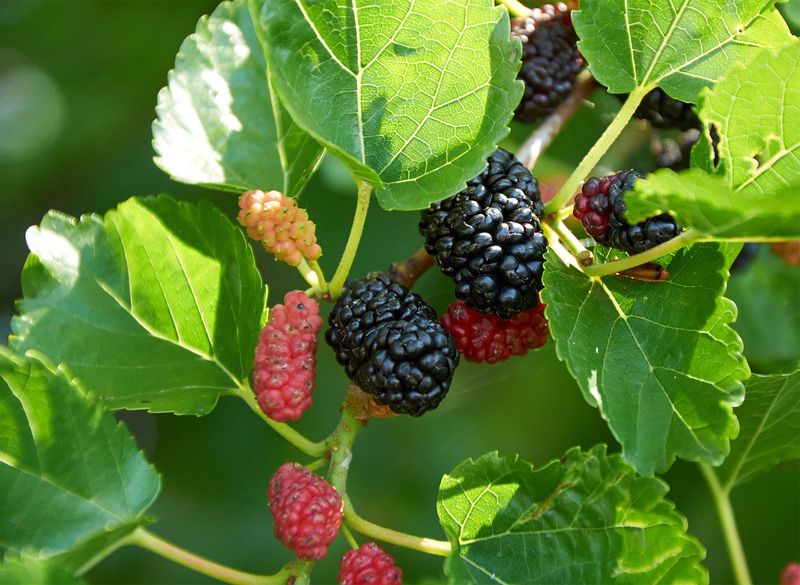
Mulberries are a magnet for bluebirds, thanks to their rich, sweet berries. These trees provide an abundance of food, attracting birds and enhancing biodiversity in any garden. Beyond their edible rewards, mulberries offer shade and shelter, creating a haven for birds.
Their rapid growth and fruit production make them ideal for gardeners looking to quickly attract wildlife. By choosing mulberry, you not only cultivate a productive tree but also welcome bluebirds and other birds to your garden.
Their combination of utility and appeal makes mulberries a popular choice for bird enthusiasts seeking to enrich their outdoor spaces.

